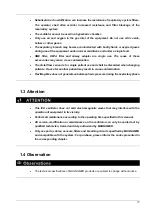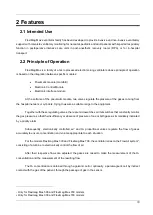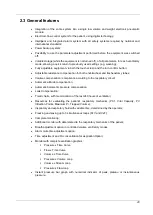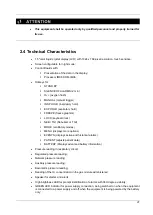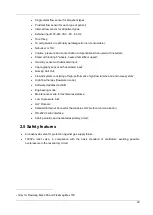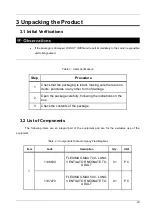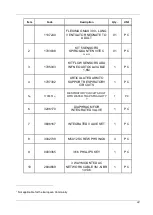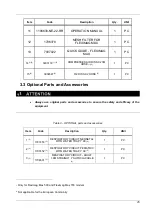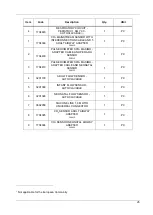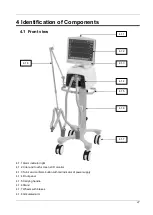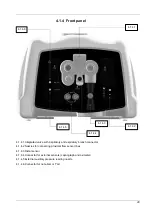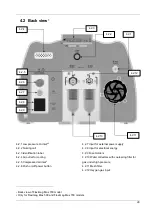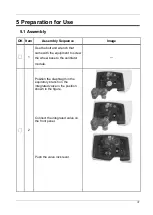
16
attempting to drain accumulated fluids in the respiratory circuit when necessary.
•
Keep the equipment connected to an electrical source even when it is turned off, so
that the internal batteries are always charged.
•
After using the equipment or after an extended period of storage, fully recharge the
batteries.
•
If LOW BATTERY alarm occurs, IMMEDIATELY connect the ventilator to an electrical
Network. If this is not possible, provide another suitable means of ventilatory support
and then DISCONNECT patient equipment.
•
Recharge the batteries before the next use, otherwise, any electrical power failure may
interrupt the operation of the ventilator.
•
Always check that there are no obstructions, as it is extremely important for a correct
monitoring of ventilatory parameters that the respiratory circuit is completely
unobstructed.
•
Never obstruct the pressure connections. The pressures measured at these points are
used by the patient monitoring system.
•
After use, reusable respiratory circuit components shall go through a high-level
disinfection process before their next use.
•
All parts of the equipment that come in contact with fluids from the patient SHALL be
discarded, disinfected, sterilized or disposed of as potentially infectious hospital waste.
•
All parts of the FlexiMag Max that are in the gas passage way, including accessories
and applied parts, are made of non-toxic, latex-free and phthalate-free material and do
not cause irritation or allergy to the patient.
•
Common use non-exclusive FlexiMag Max accessories, such as masks, circuits,
nebulizers, humidifiers, HME filters, among others, shall be registered with local
government.
•
Do not use the equipment if a problem cannot be solved.
•
Have a manual ventilation device available for the case of complete discharge of the
battery, lack of gases for the operation of the device or even for general failure of the
ventilator. The absence of manual ventilation in these cases may result in death of the
patient.
•
Always use officially approved oxygen cylinders and pressure reducing valves that
meet local government requirements.
•
For proper ventilation, when adjusting the ventilator, take into consideration the dead
spaces of the respiratory circuit, especially for low tidal volumes.
•
The ventilator shall not be covered or positioned in such a way that operation or
performance is affected.
•
When components of the respiratory circuit or other components or subassemblies are
added to the respiratory system of the ventilator, the pressure gradient across the
respiratory system, measured relative to the patient's port of attachment, may increase,
adversely affecting the performance of the ventilator.
















